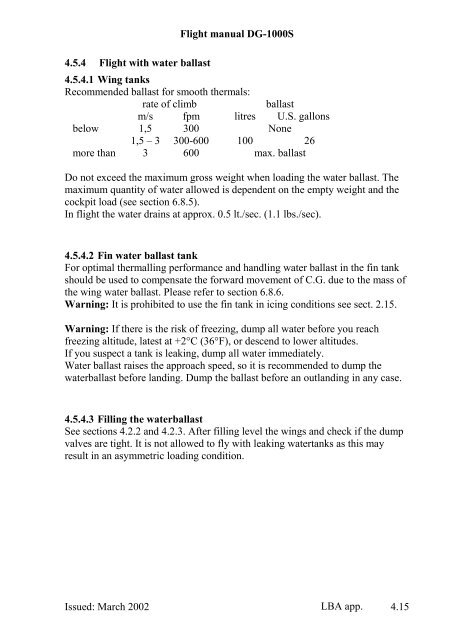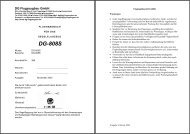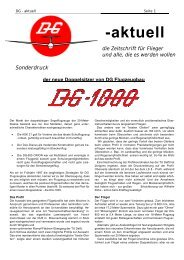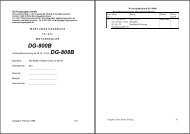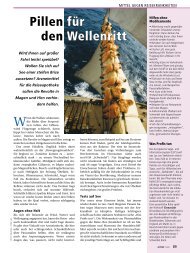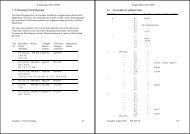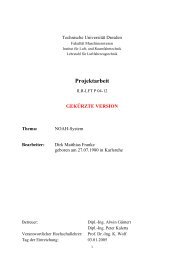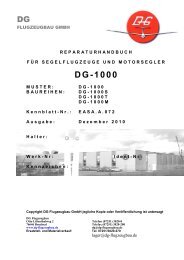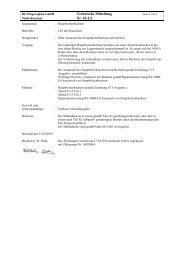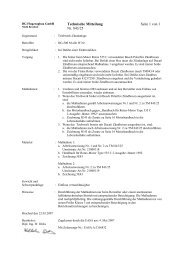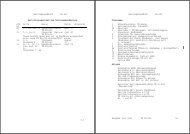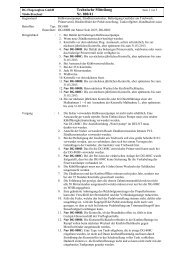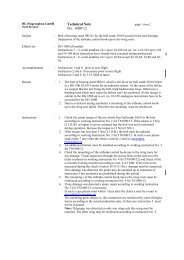DG-1000S - DG Flugzeugbau
DG-1000S - DG Flugzeugbau
DG-1000S - DG Flugzeugbau
Create successful ePaper yourself
Turn your PDF publications into a flip-book with our unique Google optimized e-Paper software.
Flight manual <strong>DG</strong>-<strong>1000S</strong><br />
4.5.4 Flight with water ballast<br />
4.5.4.1 Wing tanks<br />
Recommended ballast for smooth thermals:<br />
rate of climb ballast<br />
m/s fpm litres U.S. gallons<br />
below 1,5 300 None<br />
1,5 – 3 300-600 100 26<br />
more than 3 600 max. ballast<br />
Do not exceed the maximum gross weight when loading the water ballast. The<br />
maximum quantity of water allowed is dependent on the empty weight and the<br />
cockpit load (see section 6.8.5).<br />
In flight the water drains at approx. 0.5 lt./sec. (1.1 lbs./sec).<br />
4.5.4.2 Fin water ballast tank<br />
For optimal thermalling performance and handling water ballast in the fin tank<br />
should be used to compensate the forward movement of C.G. due to the mass of<br />
the wing water ballast. Please refer to section 6.8.6.<br />
Warning: It is prohibited to use the fin tank in icing conditions see sect. 2.15.<br />
Warning: If there is the risk of freezing, dump all water before you reach<br />
freezing altitude, latest at +2°C (36°F), or descend to lower altitudes.<br />
If you suspect a tank is leaking, dump all water immediately.<br />
Water ballast raises the approach speed, so it is recommended to dump the<br />
waterballast before landing. Dump the ballast before an outlanding in any case.<br />
4.5.4.3 Filling the waterballast<br />
See sections 4.2.2 and 4.2.3. After filling level the wings and check if the dump<br />
valves are tight. It is not allowed to fly with leaking watertanks as this may<br />
result in an asymmetric loading condition.<br />
Issued: March 2002 LBA app. 4.15


